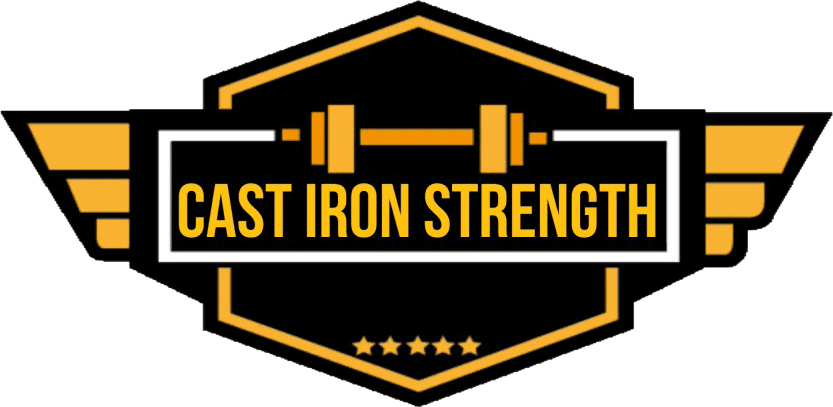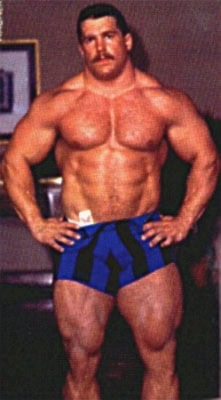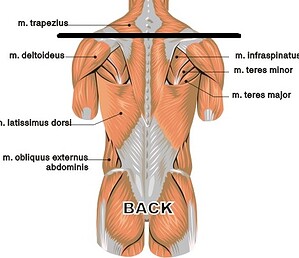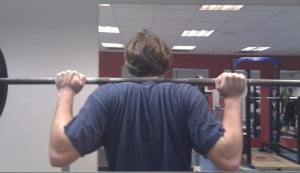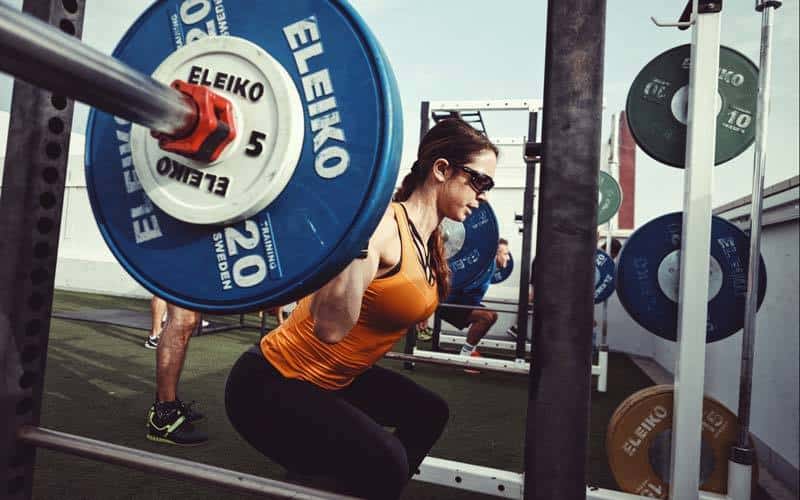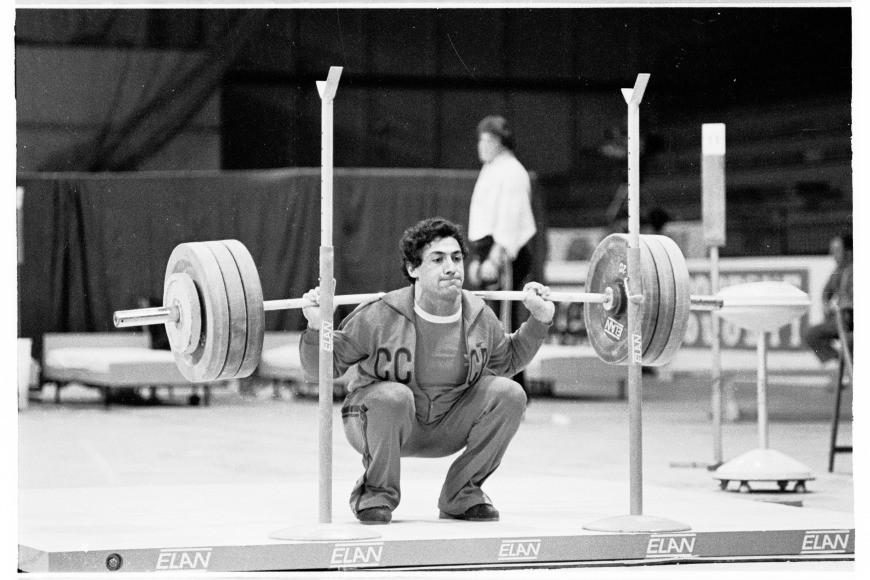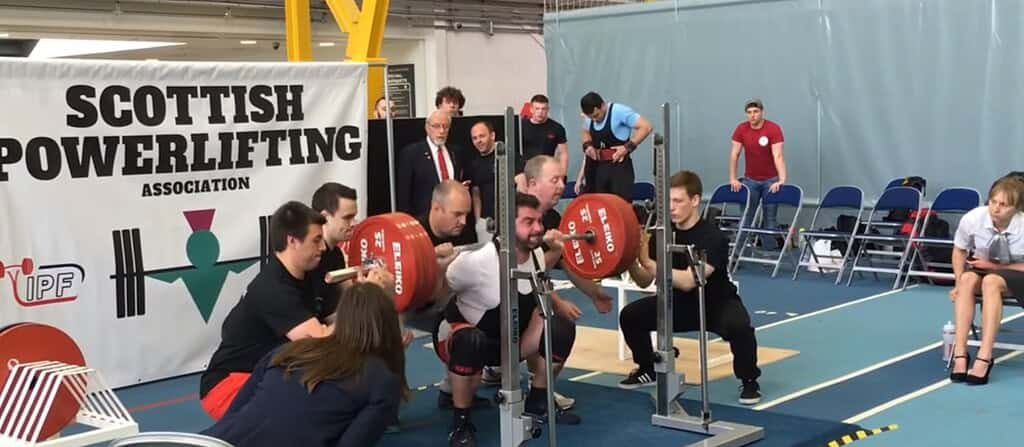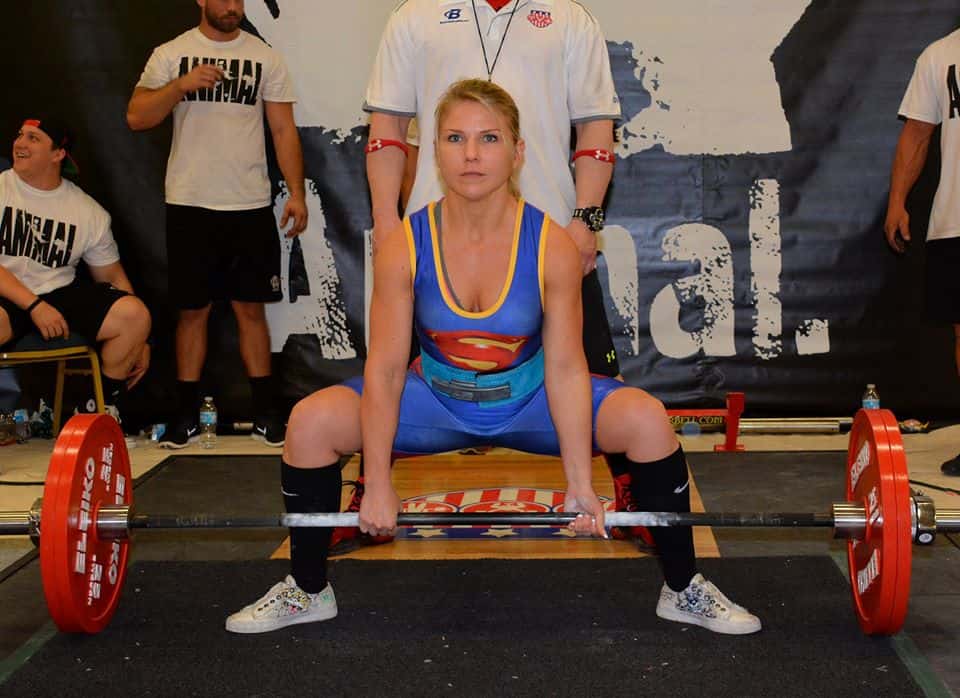I have written a few articles on technique on pretty much all of the main powerlifts and core exercises in weight training (weightlifting, sports training or general strength training) what I would like to deliver with this series is a simple, well rounded explanation on how to perform each of the key lifts with good technique.
Squat is probably the one exercise that nearly everyone in the gym should be doing for a powerlifter it represents 33% of your sport, as a weightlifter it is probably one of the most important leg strength exercises you can utalise and as a strongman it is not only a key assistance exercise but also a competitive event. For a running or jumping athlete squatting is key in developing your vertical force production capabilities and as a bodybuilder it is much more difficult to build a huge set of legs with a programme that doesn’t have squat in it. Squat is a pretty popular lift and with good reason.
Step one getting ready to squat.
Probably the most common problem with people learning how to squat is they just whack a bar on their back and start back squatting. It really is a good idea to do an active warm up that will encourage the correct movement patterns needed in squatting. There isn’t really much need to do a tonne of mobility and flexibility before squatting you will get a lot of extra range of motion around joints just by performing a decent warm up.
Perform the following warm up circuit 3x through
1 – Goblet Squat hold – 30 seconds
2 – Rear leg elevated split squat – 5 reps on each leg
3 – Wall squat with broom stick or bar (can place Thera bands across knees to encourage hip adduction during the lift). – 10 reps
The goblet squat holds will encourage you to sit into the correct position in the squat (hips down and knees our or forward) pushing out against your knee with your elbows and trying to stick your chest out at the same time will also encourage a good trunk postion.
The split squat will give you a chance to work on your knee/ankle proprioception whilst encouraging your glutes to work in a manner that will help to encourage knee abduction.
The wall squat is probably the single best teaching tool for a back squat. It will show the lifter how to sit back and down with their hips and most important of all maintain a stable torso throughout the lift.
Step two putting the bar on your back.
This is a bigger issue than a lot of people make it out to be however having the bar either too high or too low on your back is going to throw your movement completely off. Therefore you should look to find the bar position that feels strongest for your body shape the only way to find out where this is without a coach will be through trial and error.
Typically the sweet spot for most people is just across the top of the shoulders like in the figure below. Some people will find it north or south of this position but for most people of average proportions and normal mobility/flexibility the best place to place the bar will be somewhere around here.
The need to hold your trunk at the same angle during the lift is paramount as the number one reason people miss a squat is not down to leg or hip strength it is down to trunk strength. Once your trunk starts to bow or change shape the muscles of the lower back become prime movers these muscles are not very strong so it normally ends up in some horrible looking reps or the lifter getting clamshelled.
The best way to hold your elbows is down and close this will bunch up the musculature of the upper back into a nice tight bunch. This will aid in keeping your upperback solid through the lift.
How close you get your hands in on the bar will be determined between a mix of your shoulder flexibility/integrity and your physical shape. It can be pretty difficult for some 6ft 6 guys who are 120 kg plus to grip the bar like above, the closer you can get the better you back will act as a solid conduit between your legs and the bar and less like a spaghettio.
Step three stepping out and getting your feet right.
It is always best to take as few steps as possible to clear the rack and set your feet as you will appreciate when you start to lift heavier tonnage. Generally a rule of three is optimal to get yourself right. Two steps to get the bar out of the rack and one to adjust your feet. As regards to how wide your stance should be generally slightly outside your hips is best, the easiest way to see where to set your feet is to perform the wall squat, when you can perform a wall squat comfortably practically touching the wall then what ever stance width you are in will be pretty much bang on for you.
Also it is a much better idea to take the bar out with you facing into the rack as it is much easier to walk backwards with a bar on a fresh pair of legs than it is post 20 rep squat set.
Again how you place your feet in regards to pointing out or pointing forwards is pretty much down to the individual. It is easier for people with poor calf ROM to squat with a more duck type stance since you will require less ankle dorsiflexion to reach depth however it is also less powerful out of the bottom range. Therefore a compromise between the two is normally best, the best way to determine this compromise is…. well wall squat. What ever way you hold your feet in that drill is how you should hold them in the squat.
Step four – Sitting down
Once you have set your feet then the next part of the squat is to start the decent. A lot of noise gets made about breaking at the hips first, knees first, sitting down, sitting in or sitting forward all of these tip are noise. Everyone breaks at the hips and knees at the same time if they don’t then they are doing hack squat/leg press or a good morning. Once you are set you should imagine that wall is in front of you again! The way you are going to squat and not smash your face against the wall is to sit back and down. Imagine you’re going to touch your arse to a stool that is sitting behind you as soon as you feel your pelvis start to move then just sit straight down.

It’s that simple.
The number one rule in all of squatting is to keep your trunk the same shape throughout it doesn’t matter if you are front squatting, back squatting, box squatting, low bar squatting or high bar olympic squatting (what ever the hell that is) if you maintain your trunk shape you will complete the lift because your knees and hips are hella strong!
On the way down you’re just trying to hold your shape, you don’t need to go down fast or slow you just need to hold your shape. Everyone has their own preferred speed of squat descent a lot of which will depend on how you hold the bar or how deep you are going. There is no correct or wrong way to do it as long as your trunk maintains the same throughout.

Step Five – How deep should I go?
This is the probably the most contentious issue in all of weight training squatting deep will
- Wreck your knees
- Make you more of a man
- Wreck your lower back
- Make you a far better athlete
- Squat doesn’t count unless you pass an invisible line around parallel
- If you twitch your knees with 1300lbs your will be the new all time record holder.
Etc. Etc. The whole squat depth issue is a bit of a comedy how deep you squat just needs to be in line with your goal. If you’re training for one of the spaghetti soup powerlifting federations then you should get away with what you can and pass the lift. If you lift in the IPF you should get away with what you can and pass the lift. If you’re anyone else you should squat as deep as you can whilst holding your trunk shape and technique. If you can go ass to grass and hold your shape get your ass to grass. If you look like quasimodo below parallel don’t go below parallel it’s that simple.
One of the biggest mistakes a lot of lifters make is going beyond a range in which they can maintain their shape. If you get huge amounts of “butt wink” then don’t go do deep or learn how to squat. It’s not a muscular strength issue or probably not a flexibility issue it is almost certainly a technique issue. Go back to stage one.
Step Six – coming up.
Once you have reached your depth (learn to feel where this depth is either work with a camera/mirror/partner/box to establish where your natural or current limit is) then you need to stand back up. There are a number of ways of teaching someone how to do this the best of which I have found is.
Stand up as hard as you can.
Don’t think about keeping your chest up or using your legs first or using your hips first these are just needless complications. Your need to just stand straight up the closer you can get to standing straight up the better a lifter you are going to be. Less thinking more lifting, if you stand up hips first then you need to look at your technique (go back to step one) you trunk should stay pretty much the same angle it was coming down on the way back up.
You will naturally stand back with a bit of backward motion from the hips if you sit down past parallel. Don’t overthink it there are biomechanical reasons for why this is the case none of which you need to understand on how to squat with good technique.
As long as your trunk remains in the same shape and you complete the lift then you are golden.
The most important thing you can do when you’re completing the concentric portion of the squat is stand up with intention, you should be trying to stand up with as much strength and force as you can muster while not losing your technique.
And that ladies and gentlemen is how you perform a single rep of squat. Some extras to think about.
- Practice makes better/Perfect practice breeds perfection. Never perform a bad rep unless it’s in a competition or a personal best (if your doing a personal best in the gym with bad form you might need to look at how your training!)
- Frequency is important for learning how to squat you should realistically be squatting 2-3x per week if you want to be strong at it, for people who squat for the fringe benefits than 1x per week is perfect as long as there is sufficient volume.
- If you are starting at the floor than something, somewhere has gone horribly wrong.
- Always set up and perform your reps the exact same way each time you need to be a repetition machine. Same mental preparation every single time.
- Don’t massage your ego always lift with the best possible technique you can muster and don’t cut depth to get more weight on the bar.
